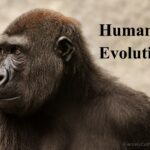
The unfortunate and complicated story of Galileo and the Catholic Church may lead some people to mistakenly believe that there is conflict between science and faith.
For centuries, Earth was thought to be the center of the universe. Belief in this geocentric model where the sun, moon, stars, and planets orbited Earth was the most common.
Although the Bible does not teach science, the interpretation of certain verses from Sacred Scripture about Earth and the sun also seemed to agree with a geocentric model.
In 1543, a Catholic polymath named Nicolaus Copernicus published a revolutionary work suggesting a heliocentric system where Earth revolved around the sun and not the other way around.
Galileo Galilei was a Catholic astronomer who supported Copernicus’ work and provided new evidence although the evidence would not be fully verified until decades later with the help of other Catholic scientists.
Pope Urban VIII actually encouraged his friend Galileo to present his findings about heliocentrism but asked him to provide evidence along with a fair representation of the opposing view of geocentrism.
In 1632, Galileo presented heliocentrism as a fact but without sufficient evidence and in a manner that insulted the pope. He was asked to recant and he spent the rest of his life working under the supervision of the Inquisition.
Although science has determined that Earth does revolve around the sun, it turns out that neither body is at the center of the universe.
Originally placed on the index of banned books, Galileo’s Dialogue on the Two Most Important Systems of the World was removed in 1835.
In 1992, Pope John Paul II called the Galileo affair a “painful misunderstanding” and a lesson for future cooperation between science and faith.
The idea that there is something greater:
A question that the Bible does not answer:
Of old You laid the Earth’s foundations; the heavens are the work of your hands.
Psalm 102: 26
The Church relies on reason and science:
Another scientific perspective existed at the time:
The Church asked for observational evidence for Galileo’s theory:
The question about the origins of the world and of man has been the object of many scientific studies which have splendidly enriched our knowledge of the age and dimensions of the cosmos, the development of life-forms and the appearance of man. These discoveries invite us to even greater admiration for the greatness of the Creator, prompting us to give Him thanks for all his works and for the understanding and wisdom He gives to scholars and researchers. With Solomon they can say: “It is He who gave me unerring knowledge of what exists, to know the structure of the world and the activity of the elements. . . for wisdom, the fashioner of all things, taught me.”
Catechism of the Catholic Church 283
The Galileo affair led to many myths about science and religion:
A lesson can be drawn from the Galileo case that remains relevant in relation to similar situations that arise today and may arise in the future. At Galileo’s time, it was inconceivable to imagine a world that lacked an absolute physical point of reference. And since the cosmos then known was, so to speak, contained in the solar system alone, this point of reference could only be located on the Earth or on the sun. Today, after Einstein and in the perspective of contemporary cosmology, neither of these two points of reference has the importance it had then. This observation, obviously, does not concern the validity of Galileo’s position in the debate; rather, it intends to indicate that often, beyond two partial and contrasting visions, there is a broader vision that includes and surpasses them both.
Pope John Paul II, Address to Pontifical Academy of Sciences, 31 October 1992
A result of conflicts in science and in the Church:
Reconciling the relationship between science and faith:
The Truth, Goodness, and Beauty of the Catholic Church
Growing closer to Christ, step by step:
Share this page with friends and family to start a conversation about your faith.
Don’t miss a post. Learn more about the Catholic Church and strengthen your Catholic faith.
Find more Fiercely Catholic video issues here.
Subscribe here.

